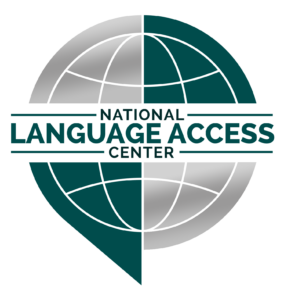How Small Businesses Can Implement Affordable Language Access Solutions
In today’s diverse marketplace, small businesses can greatly benefit from catering to a wider audience, including those with limited English proficiency (LEP). However, many small businesses may feel that language services are beyond their budget. This simply isn’t true! There are plenty of cost-effective strategies to make your business more language inclusive.
When I first started interpreting, I mostly worked with large organizations and courts. Over time, I saw how much even small businesses could benefit from language services, and I began to focus on helping them find affordable solutions.
Why Language Access Matters for Small Businesses
Before we dive into solutions, let’s recap why language access is crucial for small businesses:
Expand your customer base: Tap into the growing market of LEP consumers in your community.
Enhance customer satisfaction: Make LEP customers feel welcome and valued, leading to increased loyalty and positive word-of-mouth referrals.
Improve communication and reduce errors: Avoid misunderstandings that can lead to lost sales or dissatisfied customers.
Gain a competitive edge: Differentiate your business by demonstrating a commitment to inclusivity.
Comply with legal requirements: Ensure your business adheres to non-discrimination laws like Title VI of the Civil Rights Act.
Cost-Effective Language Access Solutions
Here are some practical and affordable strategies for small businesses:
- Leverage Technology
Free translation tools: Utilize free online translation tools like Google Translate for basic communication or understanding the gist of a document. (Remember that these tools have limitations and shouldn’t be used for important documents or sensitive information.)
Multilingual websites and social media: Use website plugins or translation services to offer your website content in multiple languages. Similarly, create social media posts in the languages spoken by your target audiences.
Language learning apps: Encourage your staff to learn basic phrases in commonly encountered languages using free or affordable language learning apps like Duolingo or Babbel.
- Optimize Human Resources
Identify bilingual staff: If you have employees who are proficient in other languages, leverage their skills for basic communication or customer interactions. (However, remember the limitations of relying solely on bilingual staff for interpreting, as discussed in my previous blog post.)
Community volunteers: Partner with community organizations or language schools to find volunteer interpreters who can assist with specific events or customer interactions.
Train staff on cultural awareness: Even without language skills, staff can be trained on basic cultural awareness and communication strategies to create a more welcoming environment for LEP customers.
- Strategic Interpreting and Translation
Telephone interpreting: Use on-demand telephone interpreting services for quick and affordable access to interpreters for various languages.
Volunteer interpreters for community events: Engage volunteer interpreters for community events or outreach initiatives targeting specific language groups.
Prioritize key documents for translation: Instead of translating everything, focus on translating essential documents like intake forms, brochures, or signage.
- Build Relationships with Community Organizations
Partner with local organizations: Collaborate with community organizations serving LEP populations to reach out to potential customers and gain insights into their needs and preferences.
Participate in community events: Attend or sponsor events in LEP communities to build relationships and promote your business.
- Make Language Access Part of Your Business Culture
Promote language access: Let your customers know that you offer language assistance through signage, your website, and social media.
Gather feedback: Ask LEP customers for feedback on their experience and identify areas for improvement.
Continuously improve: Regularly assess your language access strategies and adapt them to the evolving needs of your community.
By implementing these cost-effective strategies, small businesses can break down language barriers, create a more inclusive environment, and tap into the growing market of LEP consumers.
Need Help?
Navigating the world of language access can be overwhelming, especially for small businesses with limited resources. As an experienced language professional, I’m here to help. I can guide you through the process of identifying your language needs, developing a cost-effective language access plan, and connecting you with qualified interpreters and translators. Don’t let language be a barrier to your business success—contact me today to discuss your specific needs and make your business more inclusive and accessible.






